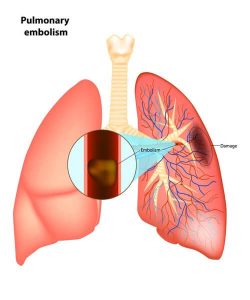The birth of a baby could be the most joyous moment in a mother’s life. While labour and delivery is a certain end to your 9-month pregnancy period, what is not predictable is the potential complications that might accompany your delivery process. Dr Watt Wing Fong from The Obstetrics & Gynaecology Centre shares some rare complications that might happen during a natural birth (aka vaginal) delivery procedure.
1. Amniotic Fluid Embolism
What is Amniotic Fluid Embolism?
Amniotic fluid embolism occurs when the amniotic fluid, cells, hair or faecal matter of the baby enters the mother’s blood circulation, triggering an inflammatory reaction that may lead to secondary conditions like Disseminated Intravascular Coagulation (DIC). DIC is a dangerous condition that can cause excessive bleeding in the pregnant mother.
Why is it dangerous?
Chances of death from amniotic fluid embolism can be as high as 80%. Unfortunately, this condition cannot be predicted nor be prevented. A pregnant woman may suddenly faint during labour or delivery without prior warning or feel dizzy and experience a drop in blood pressure when amniotic fluid embolism happens.
How is it managed?
If the pregnant mother collapses during labour, the obstetrician will first have to deliver the baby through Caesarean section before treating the mother. Otherwise, it would be difficult to resuscitate the woman. If the amniotic fluid embolism triggers DIC, causing the pregnant mother to bleed excessively, she will require an emergency blood transfusion.
Who are at risk?
Older pregnant women have a higher risk of amniotic fluid embolism happening during their delivery. Fortunately, this is an extremely rare complication.
2. Pulmonary Embolism
What is Pulmonary Embolism?
 During pregnancy, the blood in the mother becomes more coagulable and could sometimes form blood clots (known as venous thrombosis). These clots may detach from the blood vessels and subsequently flow into the vessels of the lungs, resulting in a lack of blood supply to the lungs. This is known as pulmonary embolism.
During pregnancy, the blood in the mother becomes more coagulable and could sometimes form blood clots (known as venous thrombosis). These clots may detach from the blood vessels and subsequently flow into the vessels of the lungs, resulting in a lack of blood supply to the lungs. This is known as pulmonary embolism.
Why is it dangerous?
If pulmonary embolism occurs during delivery, the mother could collapse and the chance of death is more than 50%. Pulmonary embolism may also arise during the antenatal period or post- delivery, hence the attending obstetrician should always be on the outlook for potential signs of thromboembolism.
3. Uterine Rupture
What is Uterine Rupture?
Uterine rupture is a rare complication, where the risk of it happening is less than 1%. If it occurs, it usually happens during labour.
Who are at risk?
Pregnant mothers who have had previous uterine surgery, e.g. surgery to remove fibroids (myomectomy), are at higher risk of uterine rupture due to the scarring of the womb that occurs from their previous surgery. Women who have had a previous Caesarean section are also at a higher risk for such a complication.
4. Shoulder Dystocia (of the Newborn)
What is Shoulder Dystocia?
During delivery, there are times where the baby’s head is already out of the mother’s body, but the shoulders are still lodged in the mother’s birth canal. This is dangerous for the baby, as it could lead to oxygen deprivation for the newborn. When shoulder dystocia occurs, there is an increase risk of nerve damage to the baby when the baby is being delivered. Sometimes the damage may be permanent, resulting in the baby having a “waiter’s tip hand”. Babies with this condition can move their fingers normally but will not be able to voluntary lift their shoulders nor bend their wrists. Besides nerve injury, there is also an increase risk of fractures to the baby.
Who are at risk?
 Pregnant mothers who have encountered shoulder dystocia in their previous delivery, carrying a big baby in their current pregnancy, or who are obese, have diabetes or gestational diabetes, are at risk of encountering shoulder dystocia.
Pregnant mothers who have encountered shoulder dystocia in their previous delivery, carrying a big baby in their current pregnancy, or who are obese, have diabetes or gestational diabetes, are at risk of encountering shoulder dystocia.
How can it be prevented?
For pregnant mothers with diabetes, it is important to control their diet during pregnancy so that the foetus does not grow too large. If the obstetrician observes that the foetus is too large, he or she might propose to induce labour, provided that the foetus is sufficiently mature.
While the rare complications listed above are not 100% preventable, giving birth at a younger age, and going for regular antenatal checks are simple and important steps that women can take to lower their risk of having such complications. Mothers with an active lifestyle also have a higher chance of a smooth delivery.
Lastly, in the event where a natural delivery is not successful, your obstetrician can conduct an emergency Caesarean section. Chances of a natural delivery converting into an emergency Caesarean section is between 10-15%, hence mothers need not be too worried even if they require one.
Dr Watt’s Place of Practice
Gleneagles Medical Centre
6 Napier Road #08-19
Singapore 258499
Tel: +65 6475 1158



